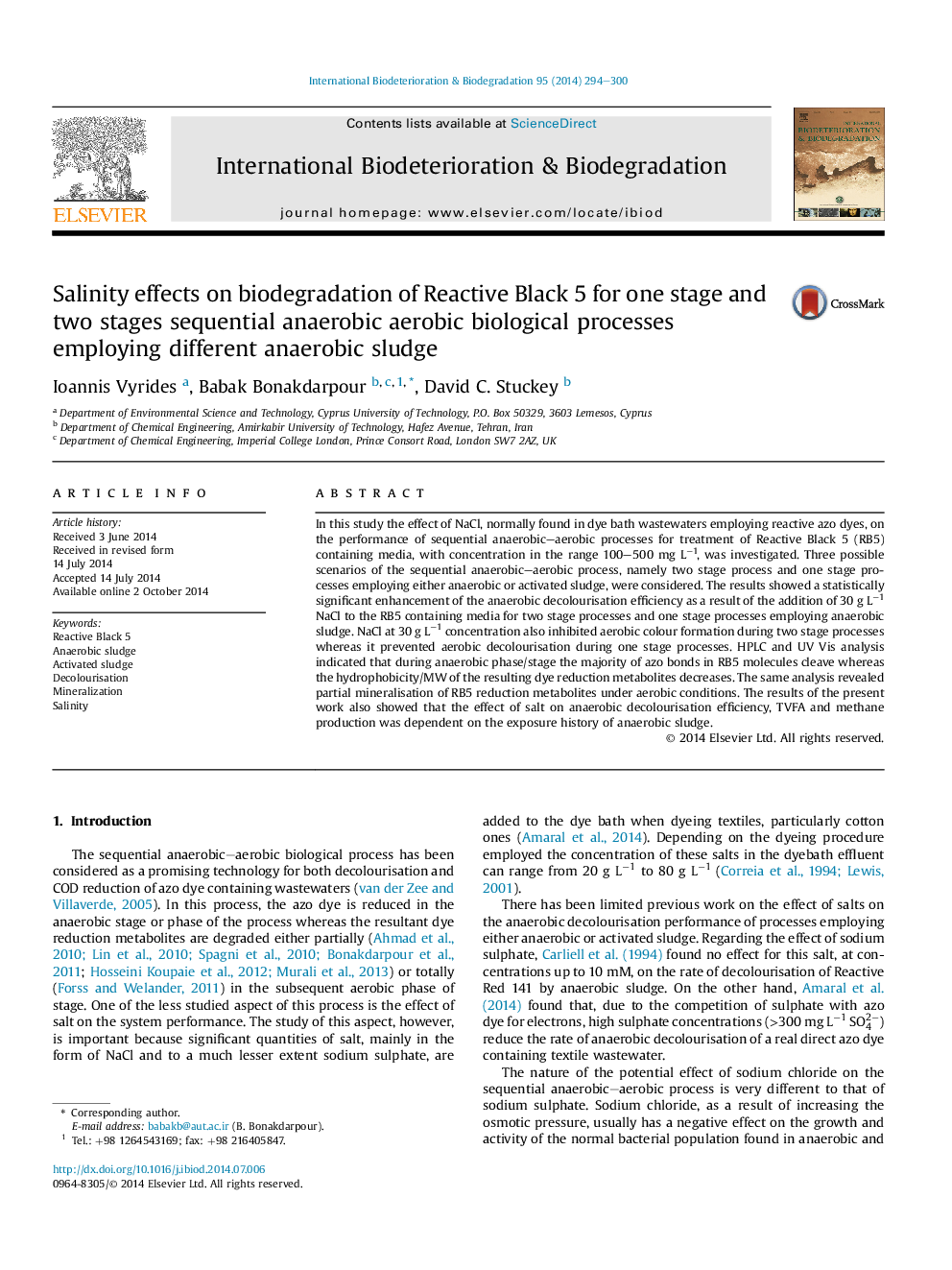| Article ID | Journal | Published Year | Pages | File Type |
|---|---|---|---|---|
| 4364688 | International Biodeterioration & Biodegradation | 2014 | 7 Pages |
•We examined NaCl effects on 3 sequential anaerobic–aerobic RB5 treatment process.•High RB5 anaerobic decolourisation was found at 30 g/L NaCl at all 3 process scenarios.•At 30 g/l NaCl two stage process runs prevented aerobic colour formation.•At 30 g/l NaCl one stage process prevented aerobic decolourisation.•HPLC analysis at 30 g/l NaCl showed change of RB5 structure during anaerobic conditions.
In this study the effect of NaCl, normally found in dye bath wastewaters employing reactive azo dyes, on the performance of sequential anaerobic–aerobic processes for treatment of Reactive Black 5 (RB5) containing media, with concentration in the range 100–500 mg L−1, was investigated. Three possible scenarios of the sequential anaerobic–aerobic process, namely two stage process and one stage processes employing either anaerobic or activated sludge, were considered. The results showed a statistically significant enhancement of the anaerobic decolourisation efficiency as a result of the addition of 30 g L−1 NaCl to the RB5 containing media for two stage processes and one stage processes employing anaerobic sludge. NaCl at 30 g L−1 concentration also inhibited aerobic colour formation during two stage processes whereas it prevented aerobic decolourisation during one stage processes. HPLC and UV Vis analysis indicated that during anaerobic phase/stage the majority of azo bonds in RB5 molecules cleave whereas the hydrophobicity/MW of the resulting dye reduction metabolites decreases. The same analysis revealed partial mineralisation of RB5 reduction metabolites under aerobic conditions. The results of the present work also showed that the effect of salt on anaerobic decolourisation efficiency, TVFA and methane production was dependent on the exposure history of anaerobic sludge.
